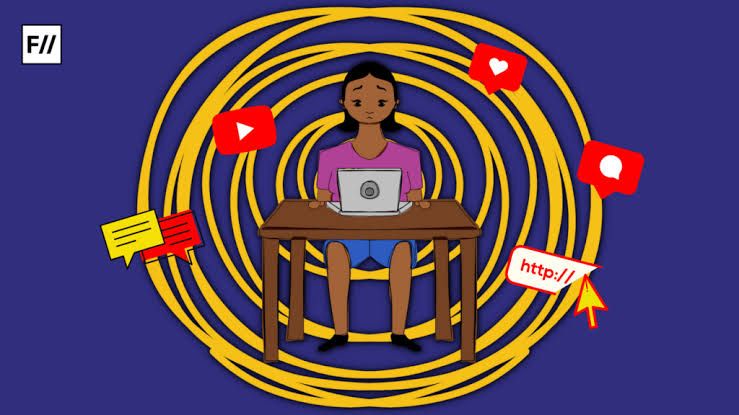Author: Rashi Mishra Prestige, Department of law
Abstract
In the 21st century, the digital world has emerged as a dynamic space for expression, connection, and sharing information. Yet, this same environment has also turned into a new battleground for gender-based violence, taking on complex, widespread, and often hidden forms. Digital Gender-Based Violence (DGBV) encompasses acts of abuse, harassment, and exploitation that happen through digital technologies, all stemming from gender-based power imbalances. Unlike traditional violence, DGBV knows no borders, can be carried out anonymously, and significantly affects victims’ mental health, safety, and rights.
This article explores the different types, underlying causes, legal frameworks, and case law related to DGBV, especially within the Indian context. It highlights the urgent need for a collaborative approach—bringing together legal reforms, technological accountability, and societal shifts—to effectively tackle this troubling issue.
To the Point
Digital Gender-Based Violence isn’t some distant issue; it’s a pressing crisis that impacts millions around the globe right now. With more people gaining access to smartphones and the internet, the chances for abuse are on the rise. DGBV includes a variety of harmful behaviors, such as cyberstalking, doxxing (which is sharing personal information), revenge porn, deepfake pornography, online sexual harassment, slut-shaming, impersonation, and gender-based hate speech. What sets DGBV apart from other types of online abuse is its gendered motivation—it’s all about silencing, shaming, or controlling someone because of their gender identity.
The fallout from DGBV is both real and heartbreaking. Victims frequently deal with anxiety, depression, social isolation, setbacks in their careers, and in the worst cases, thoughts of suicide. The trauma is made worse by victim-blaming attitudes, legal obstacles, and a lack of support from digital platforms. Additionally, in places like India, the intertwining of gender with caste, religion, and class only makes the situation more complex and challenging.
Use of Legal Jargon
Understanding the legal aspects of DGBV (Digital Gender-Based Violence) involves a few key concepts:
Mens Rea (Guilty Mind): When it comes to digital crimes, the intent behind the offender’s actions—whether it’s malicious, negligent, or reckless—plays a crucial role in prosecution.
Actus Reus (Guilty Act): The actual act of sharing explicit images, hacking, or making threats online is what constitutes the criminal behavior.
Consent: The lack of informed, voluntary, and revocable consent is a central issue in cases that involve sharing intimate content or personal data.
Intermediary Liability: According to Indian law, digital platforms are considered “intermediaries” and can be held responsible if they don’t take action on reported content.
Cyber Forensics: This refers to the scientific investigation of digital devices and data, which helps trace the origin of crimes, identify the wrongdoers, and preserve electronic evidence.
DGBV often blurs the lines between civil wrongs and criminal offenses, and how it’s enforced can depend heavily on interpreting digital footprints, privacy rights, and the complexities of jurisdiction.
The Proof
Digital violence is on the rise, yet it often flies under the radar. A 2021 study by UNESCO found that nearly three-quarters of women online have encountered some form of digital abuse. Similarly, a global survey by Plan International revealed that over half of girls have experienced harassment on social media.
In India, the National Crime Records Bureau (NCRB) reported more than 65,000 cybercrime cases in 2022, with a significant portion involving cyberstalking and defamation. A study by Feminism in India in 2020 showed that 58% of women faced online harassment, but only 1 in 10 chose to report it to the authorities.
Findings from Indian cases:
Cyber flashing and unwanted sexual advances through messaging apps are widespread on platforms like Instagram, WhatsApp, and Telegram.
The emergence of deepfake pornography, where AI-generated images are used to create explicit content, has largely gone unpunished due to a lack of legal frameworks.
Although revenge porn is illegal, it often remains unprosecuted unless victims file FIRs, a process that can be socially stigmatized and legally complex.
Case Laws
Shreya Singhal v. Union of India (2015)
In a landmark decision, the Supreme Court invalidated Section 66A of the IT Act, which had made it a crime to send “grossly offensive” messages online. While this was celebrated as a win for free speech, it also took away a vaguely defined tool that women used to report online harassment, highlighting the need for clearer legal protections.
Suhas Katti v. State of Tamil Nadu (2004)
This case marked one of India’s first convictions for cybercrime. The defendant was found guilty of posting obscene messages about a woman on a Yahoo message board, under Section 67 of the IT Act. It was a significant case that demonstrated the legal possibility of prosecuting digital gender-based violence, but it also pointed out how rare successful convictions were.
Kalandi Charan Lenka v. State of Odisha (2017)
In this case, the accused created a fake Facebook profile of a woman, using altered nude images, and sent abusive messages to her friends. The Orissa High Court upheld the charges under IPC Sections 354D and 509, as well as provisions of the IT Act, acknowledging that psychological trauma is a genuine form of harm.
Ritu Kohli Case (2001)
This was India’s first documented case of cyberstalking. A man impersonated Ritu Kohli on a chat website, leading to a barrage of unsolicited calls and messages. Although the laws were still developing at that time, this case played a crucial role in prompting future legislative reforms.
Rekha Sharma v. Unknown (2020)
In a case of revenge porn, explicit images were shared by an ex-partner. The court affirmed her right to digital privacy under Article 21 and ordered Instagram to take swift action. This case underscored the importance of holding platforms accountable for such violations.
Legal Framework
1. Information Technology Act, 2000
– Section 66C: This section addresses identity theft that occurs through electronic means.
– Section 66D: It deals with cheating by impersonation using computer resources.
– Section 66E: This section prohibits capturing or sharing private images without consent.
– Section 67: It covers the publishing or transmitting of obscene material.
– Section 67A: This section specifically targets the transmission of sexually explicit content.
– Section 69A: It allows for blocking public access to unlawful content.
2. Indian Penal Code, 1860
– Section 354A: This section addresses sexual harassment, including unwelcome digital advances.
– Section 354D: It focuses on online stalking.
– Sections 499-500: These sections pertain to online defamation.
– Section 509: This section is about insulting the modesty of a woman.
3. POCSO Act, 2012
– This act includes provisions for cyber offenses against children, such as sexting, grooming, and the distribution of child pornography.
4. IT Rules, 2021
– These rules require platforms to remove offensive content within 24 hours of receiving a complaint.
– They also mandate the appointment of grievance officers to handle user complaints.
– Additionally, there’s a traceability clause for messaging apps to help identify the originators of harmful messages.
Challenges in enforcing justice for digital gender-based violence (DGBV)
Even with laws in place, there are still significant hurdles:
Jurisdictional Limits: When perpetrators are based in other countries, it makes cross-border investigations a real headache.
Anonymity and VPNs: Offenders often hide behind fake identities and secure networks, making it tough to track them down.
Delays in FIR registration: Many police officers lack the necessary training in cybercrime and gender sensitivity, leading to delays in filing reports.
Victim Shaming: The fear of being judged by society often stops victims from coming forward.
Digital Evidence: Content on platforms like Snapchat disappears quickly, making it hard to gather evidence.
Platform Inaction: Big tech companies frequently stall or refuse to take down harmful content, claiming they’re protected by jurisdictional immunity.
Global landscape and some best practices that have emerged:
United Kingdom: The Online Safety Act of 2023 holds tech companies accountable for gendered abuse.
Australia: They’ve appointed an eSafety Commissioner to address digital complaints promptly.
Kenya and Ghana: Both countries have implemented gender-sensitive cybercrime laws that safeguard women’s digital rights.
South Korea: They have robust laws against the distribution of deepfakes and image-based sexual abuse.
Philippines: The Safe Spaces Act of 2019 covers harassment both online and offline.
While India is making strides in digital regulation, it still lacks a dedicated cyber law focused on gender issues. There’s an urgent need for comprehensive DGBV legislation that draws inspiration from these global examples.
Conclusion
Digital Gender-Based Violence (DGBV) is a powerful tool of patriarchy, hidden behind the anonymity of technology. As women and gender minorities increasingly turn to digital spaces for activism, self-expression, and making a living, they unfortunately become easy targets for misogynistic attacks. While India has a range of laws in place, they often miss the mark when it comes to addressing the psychological, social, and economic impacts of DGBV.
To move forward, India needs to:
– Create a dedicated DGBV law that combines penal, civil, and procedural protections.
– Provide training for law enforcement and the judiciary on cyber laws and gender sensitivity.
– Hold digital platforms legally responsible for not addressing harmful content.
– Set up fast-track cyber courts to ensure quick resolutions.
– Increase awareness and digital literacy, particularly in rural and marginalized communities.
A feminist internet isn’t just a lofty ideal—it’s a crucial part of a democratic society. Protecting digital dignity and safety is essential to upholding human rights in the 21st century.
FAQs
1. What exactly is Digital Gender-Based Violence (DGBV)?
DGBV encompasses any form of online abuse directed at individuals because of their gender. This can include things like cyberstalking, doxxing, sharing images without consent, deepfakes, online sexual harassment, and hate speech based on gender. It’s often a tool used to intimidate, silence, or shame women, LGBTQ+ individuals, and gender minorities in the digital world.
2. Is there a specific law in India addressing DGBV?
Currently, India doesn’t have a dedicated law for DGBV. However, various offenses can be prosecuted under existing legislation, such as the Information Technology Act of 2000, the Indian Penal Code of 1860, and the POCSO Act of 2012 (which protects minors). These laws address issues like cyberstalking, obscene content, privacy violations, and online harassment, but there’s still a pressing need for a standalone, gender-sensitive law.
3. Can I file a First Information Report (FIR) for online abuse in India?
Absolutely. Victims can lodge complaints at: Any police station or cyber cell, Make sure to gather evidence like screenshots and links. The police are required to register a complaint, especially in cases involving women.
4. How are social media platforms held accountable?
According to the IT Rules of 2021, social media platforms must: Remove offensive content within 24 hours (especially anything related to nudity or women’s safety), Appoint a Grievance Officer, Cooperate with investigations, If they fail to comply, they risk losing their legal immunity and could be held accountable.
5. What is revenge porn, and what are the penalties for it?
Revenge porn refers to the non-consensual sharing of private, intimate content, typically by an ex-partner. It is punishable under:
Section 67A and 66E of the IT Act
Sections 354C, 292, and 509 of the IPC
Penalties can include up to 5 years in prison and fines. Victims also have the right to seek removal of the content and compensation for emotional distress.




